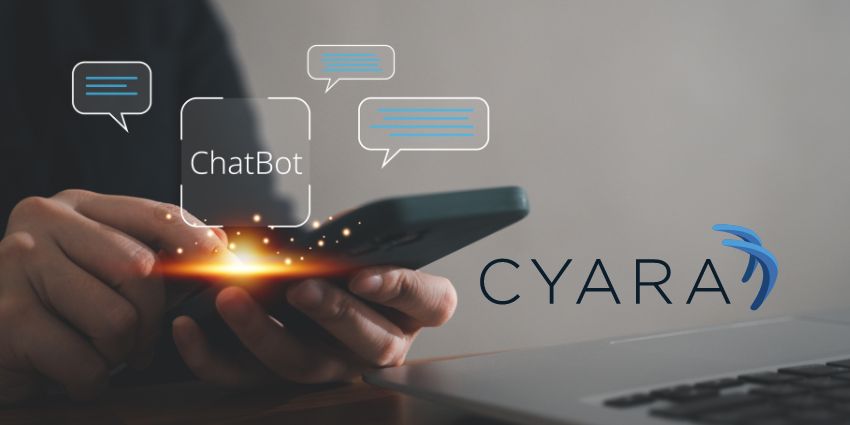Demand for conversational AI is on the rise. Generative bots such as ChatGPT have taken the world by storm, showing companies just how effective the right algorithms can be at responding to, supporting, and communicating with end-users.
At the same time, improvements in natural language processing and understanding technologies are leading to the creation of ever-more human bots. Today’s tools can hold conversations with us, express personality, and even respond creatively to prompts, using machine learning. Unfortunately, just like human beings, bots aren’t without flaws.
One of the most common issues companies face when producing their own bots is how to avoid the ethical problem of bias. While bots may not be subject to unconscious bias in the same way as us humans, they can still portray biased behavior based on the data they’re given.
Failure to pinpoint and remove bias from a bot not only damages the end-user experience but can also lead to inaccuracies in data and harm brand reputations.
So, what can businesses do about conversational AI bias?
What Is Conversational AI Bias?
For the time being, chatbots and virtual assistants don’t have opinions and emotions of their own.
This means they can’t really be subject to emotional, unconscious bias. Voice bots don’t deliberately ignore statements made by customers with a strong accent because of racist tendencies. However, they can show bias in a multitude of different ways because of their training.
Just like people have unconscious biases which affect how they behave and communicate with others, conversational bots can have biases that damage the quality of their interactions.
In fact, there are some relatively shocking examples of this throughout the world. Several years ago, Microsoft even made headlines with a Twitter chatbot (Tay) that unintentionally collected too much data from hate speech and seemed to become a racist, sexist entity overnight.
The reason bots develop biases is usually poor training and testing. Bots can only learn and respond to comments based on the information they’re given. If the data sets of a bot are limited or unintentionally biased, the bot itself will be biased as a result.
How to Reduce Conversational AI Bias
In recent years, major public issues with conversational AI bias have drawn attention to just how significant the problem can be. As a result, companies have become more cautious with the way they create, train, and test bots before rolling them out for public consumption.
Ultimately, reducing or eliminating conversational AI bias is just a matter of making sure bots are trained and deployed as ethically as possible.
Step 1: Collect Better Data
Data is the lifeblood of any conversational bot. Every word a bot says, or types to a customer is a byproduct of the data it has accessed in the past. Bots don’t just come up with answers to questions on their own, they scan through countless data points to find relevant responses.
To avoid bias in those responses, companies need to ensure they’re providing their bots with access to the right, holistic data. Collecting larger amounts of data, from multiple viewpoints, perspectives, and environments, can allow companies to create a more diverse, bias-free chatbot.
Step 2: Analyze the Bot’s Ability to Understand
Chatbots are reliant on a number of AI algorithms to function. The most advanced bots on the market today leverage a combination of natural language processing, and natural language understanding (NLU) tools. Without the right “NLU” strategy, these bots can only collect data, but they can’t really pinpoint what customers mean when they say certain things or what their intent might be.
Analyzing a bot’s ability to understand information using rich analytics ensures companies can transparently track how their bots are processing data. Evaluating the NLU process can help organizations to immediately pinpoint flaws in the NLU workflow, which may lead to bias.
Step 3: Test Real-Life Scenarios
The best chatbots aren’t created and rolled out overnight. Truly intuitive, human-style bots are trained and tested for months or even years before they’re deployed. Adequate testing and training are crucial to making sure a bot isn’t subject to instances of bias.
Leveraging the right bot-building and development platforms, companies can test their bots using real-life scenarios to determine how they’ll respond.
For instance, the Botium solution by Cyara allows organizations to test their bots with “human style” input, complete with typos, errors, shorthand, slang, and even different personality or speaking styles.
“It all comes down to the training data.” says Christoph Börner, Senior Director of Digital at Cyara. “Unsurprisingly, if this data is not objective and verified, Conversational AI can become hazardous to your organization.”
“Remember, chatbots are software, and software needs testing. Cyara fills that gap with our complete end-to-end solution, which includes our new Assisted Test Data Generator – which leverages generative AI to excellent effect.”
Step 4: Consistently Monitor and Optimize
One of the things that makes today’s bots so effective is their ability to grow, learn, and evolve with time. Bots with built-in machine learning algorithms can constantly expand their knowledge based on the data they’re taking in from other users. While this can gradually make a bot more efficient and powerful, it can also pave the way for the development of bias in some cases.
It’s difficult to know for certain what a bot might learn after speaking to thousands or even millions of customers. With this in mind, companies need to ensure they have a strategy in place for constantly monitoring the bot’s performance.
Tracking customer experience metrics, paying attention to feedback, and ensuring the bot remains ethical are crucial. “Testing should go beyond functionality to examine other aspects of your Conversational AI. Comprehensive testing is essential to uncover social and ethical concerns as well,” says Börner.
Step 5: Keep Humans In the Loop
Finally, the rise of bot technology and automation in the digital landscape has led to numerous discussions about how robots may one day be able to replace humans entirely.
However, the reality is, most of the time, humans can’t be removed completely from the CX landscape. Real people still need to be involved in training, testing, developing, and managing conversational bots.
At the very least, humans can be extremely valuable when it comes to interacting with bots and pinpointing potential ethical issues which otherwise may be overlooked.
Bots may be able to accomplish a lot in the CX landscape of tomorrow, but they can’t fully replace humans – at least not yet.







